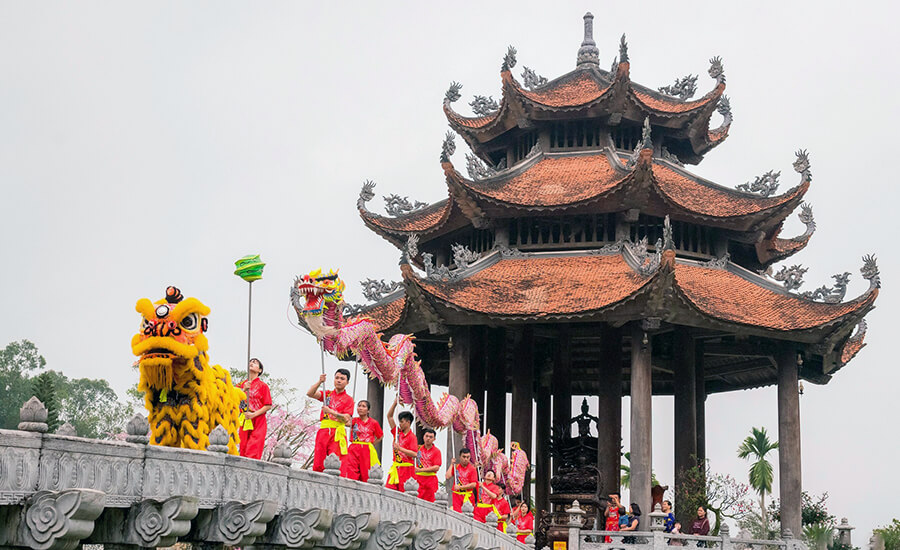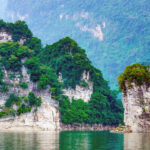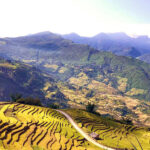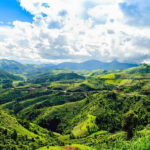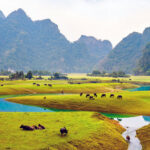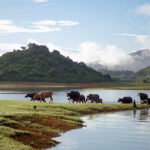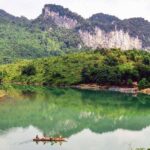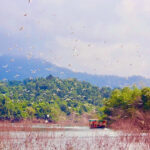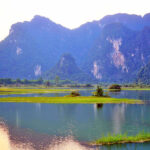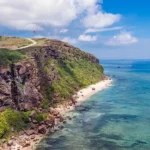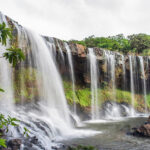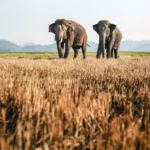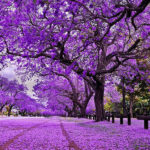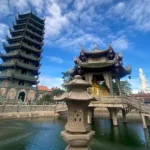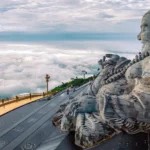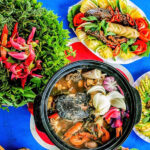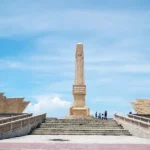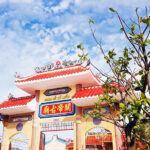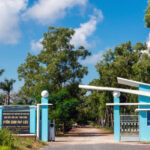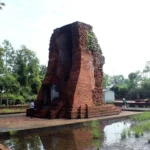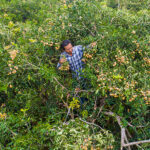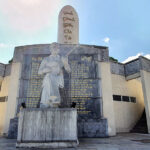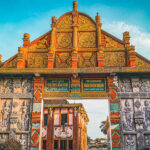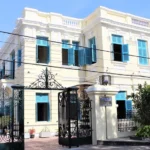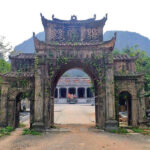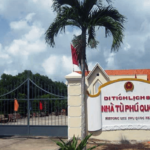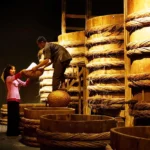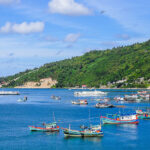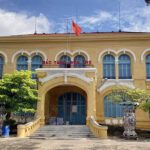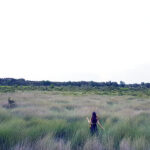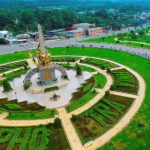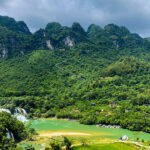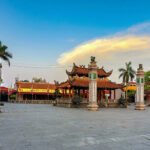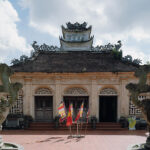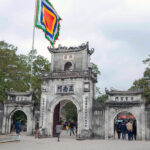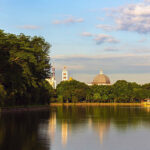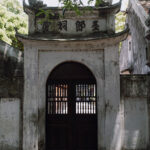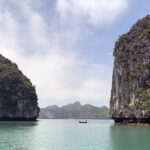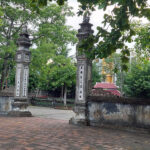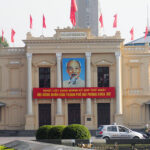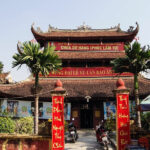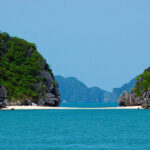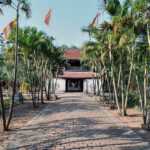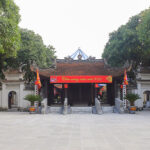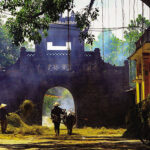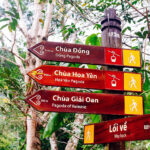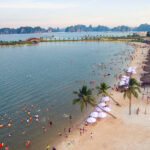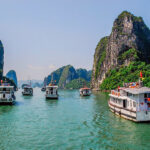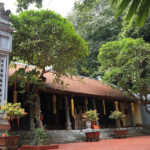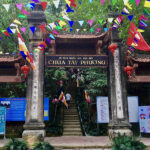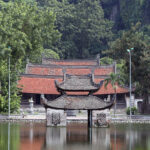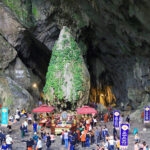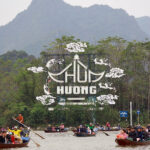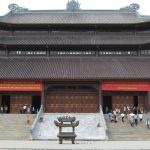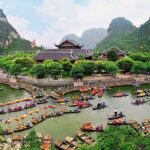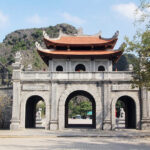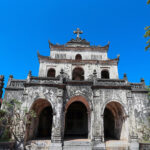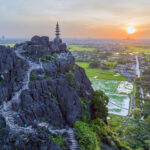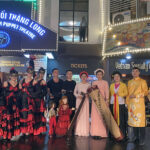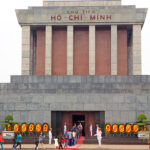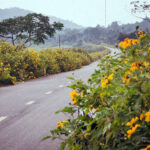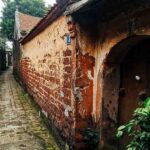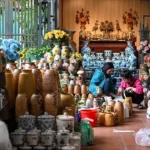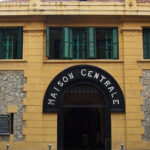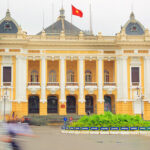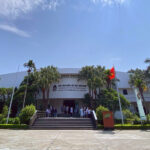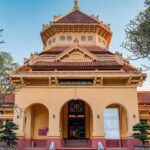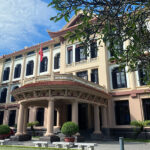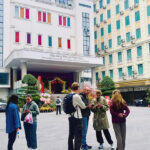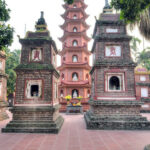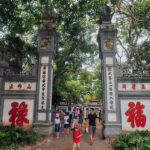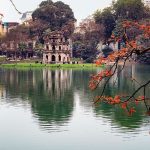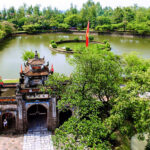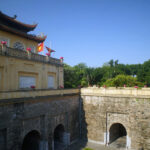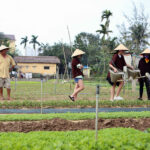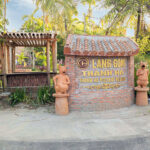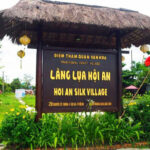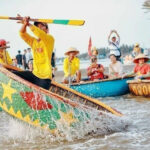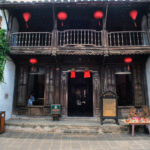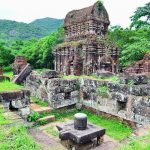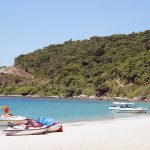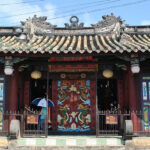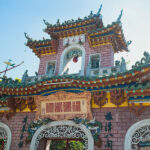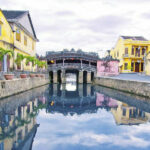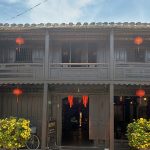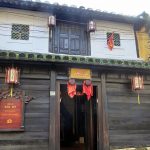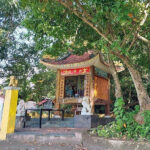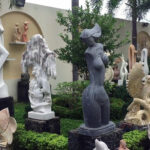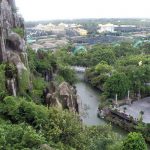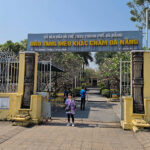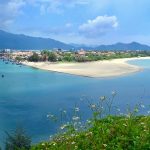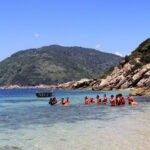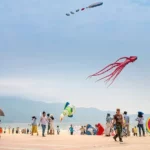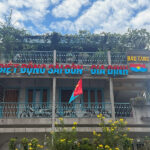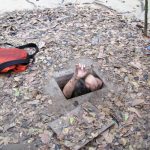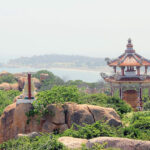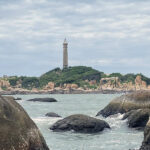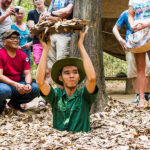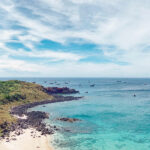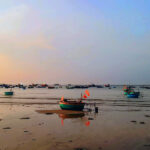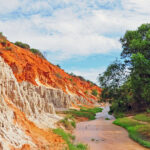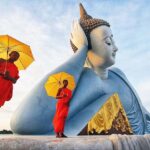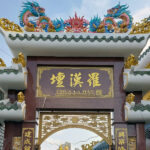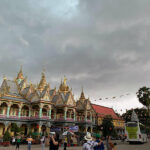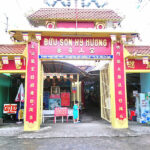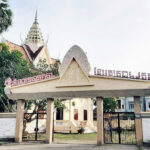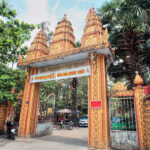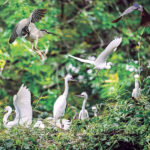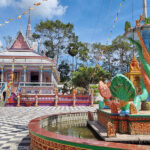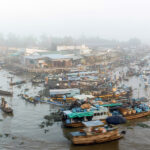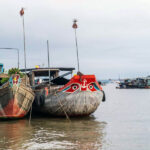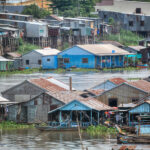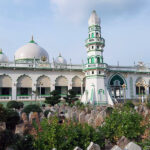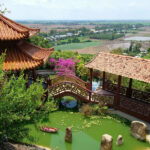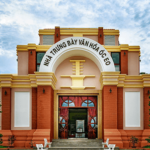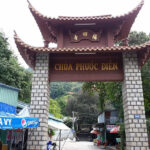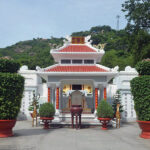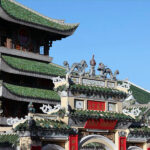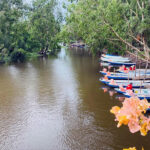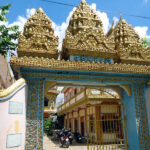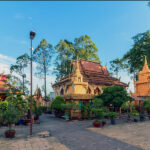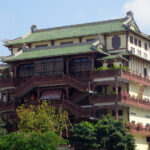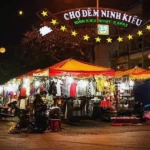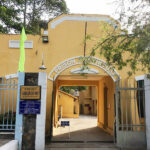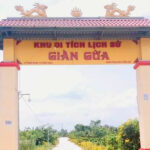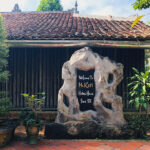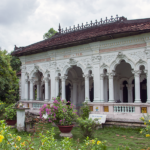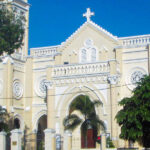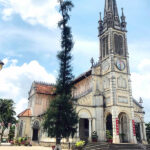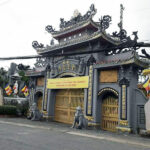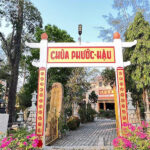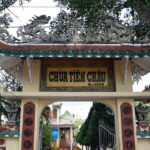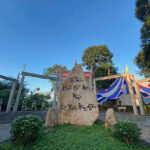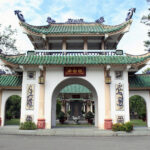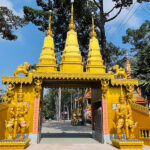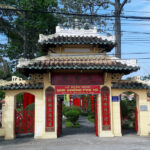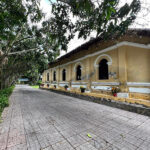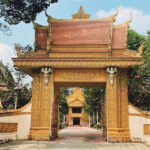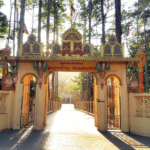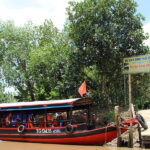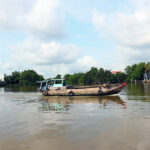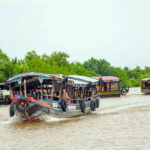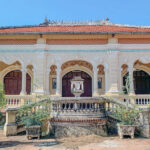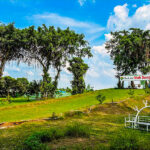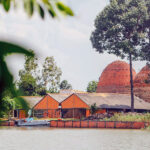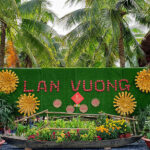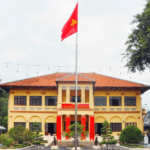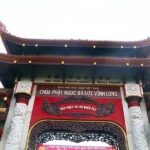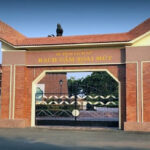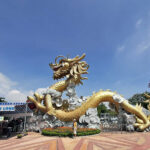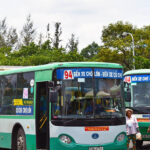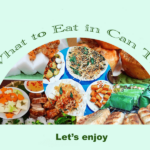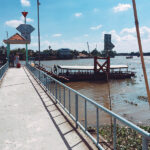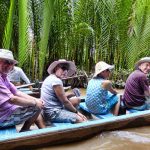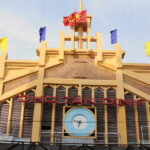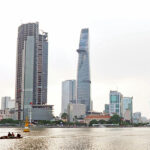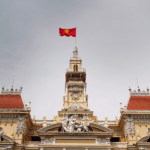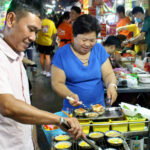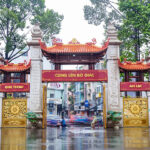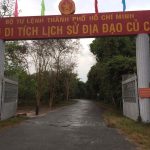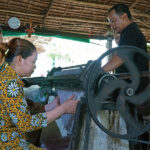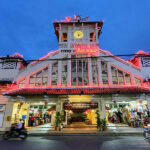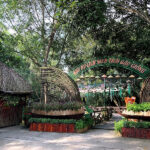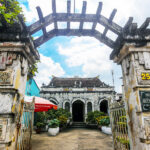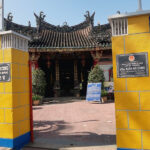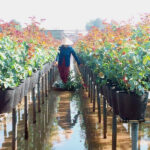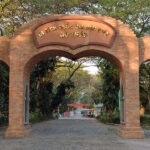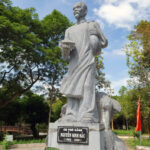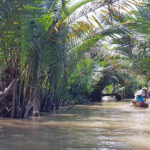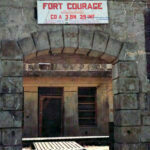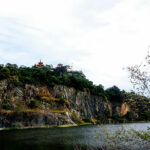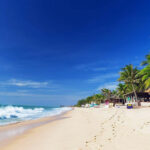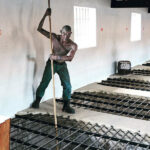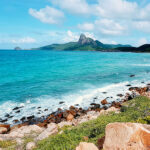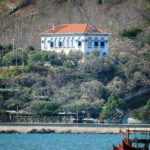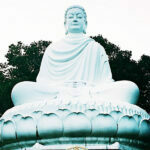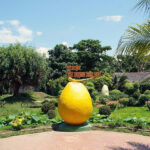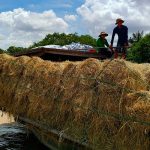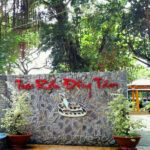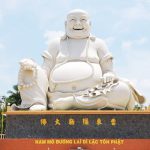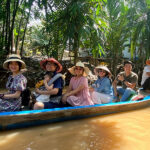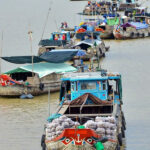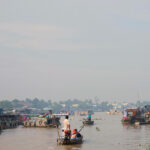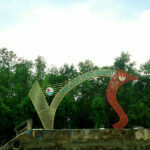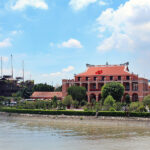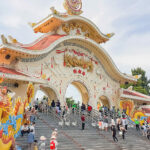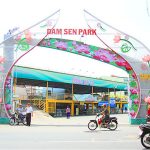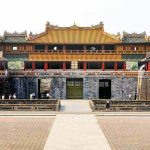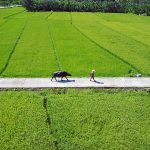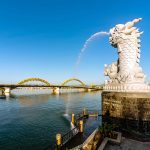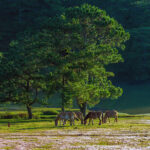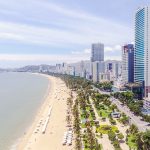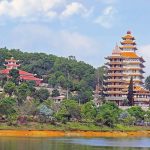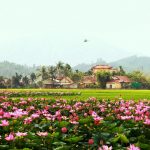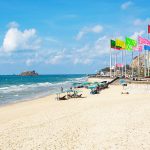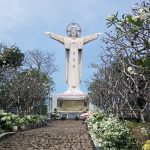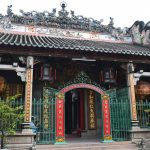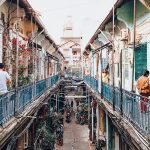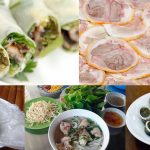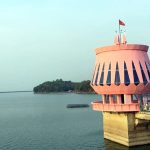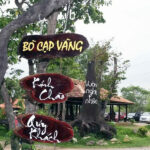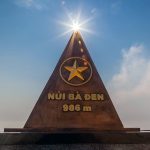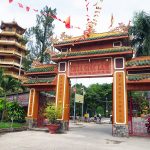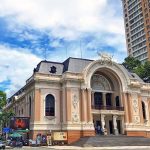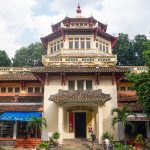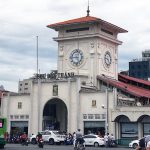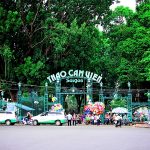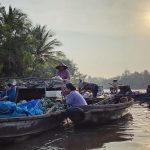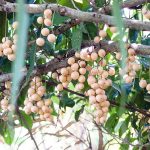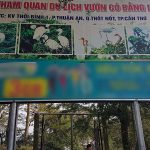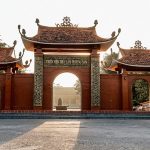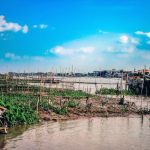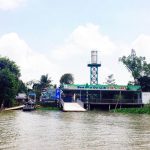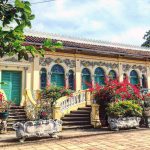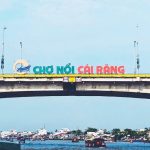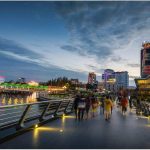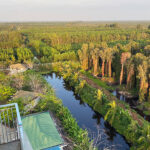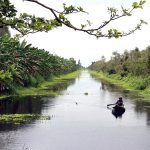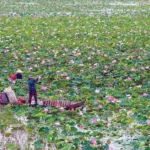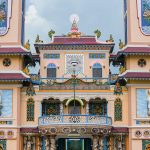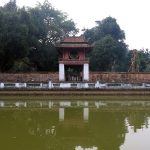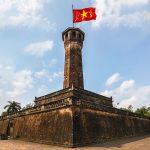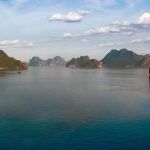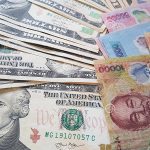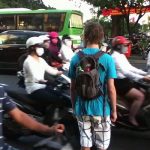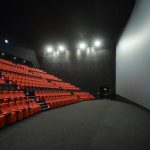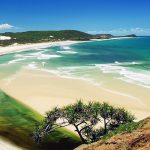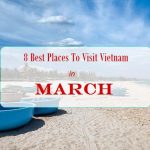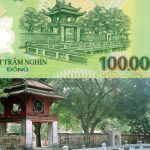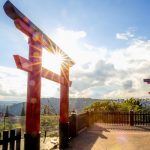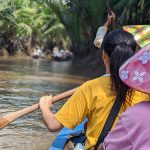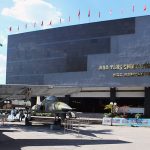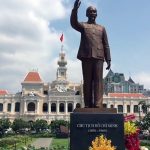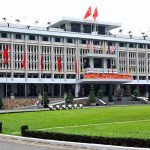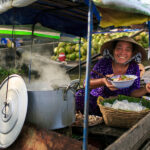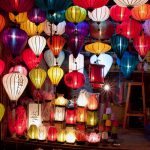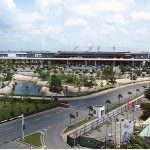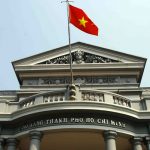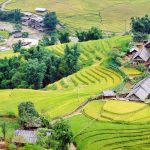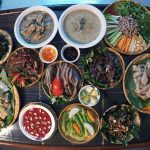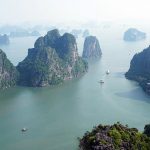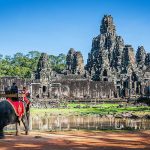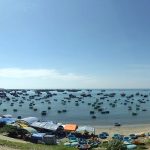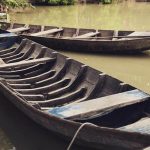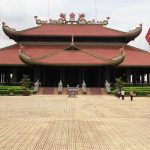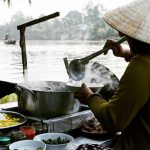Hung Yen is a land that preserves many historical relics with long-standing traditions and cultures, and the nature is beaches that still retain their wild beauty. The province is now gradually becoming one of the most interesting destinations in Vietnam.
Table of Contents
General information about Hung Yen
Hung Yen is a province in the Red River Delta, located in Northern Vietnam, with the administrative center about 55 km southeast of Hanoi. This is the only province in Northern Vietnam that is purely plain, without hills and mountains. After merging with Thai Binh province in 2025, Hung Yen province has an area of 2,514.81 km², the smallest province in Vietnam.
With geographical location, Hung Yen has:
- The East borders the Gulf of Tonkin (belonging to the East Sea) and Hai Phong city.
- The West borders the capital Hanoi.
- The South borders Ninh Binh province.
- The North borders Hai Phong city and Bac Ninh province.
What’s the best time to visit Hung Yen?
Hung Yen is in the tropical monsoon region, with cold winters. The average annual temperature is 23.2 °C, the average summer temperature is 25 °C, and the winter is below 20 °C. Hung Yen’s climate is divided into two main seasons: winter from November to March of the following year with the Northeast Monsoon as the main one, the weather in the first half of winter is cold and dry, the second half of winter is cold and wet.
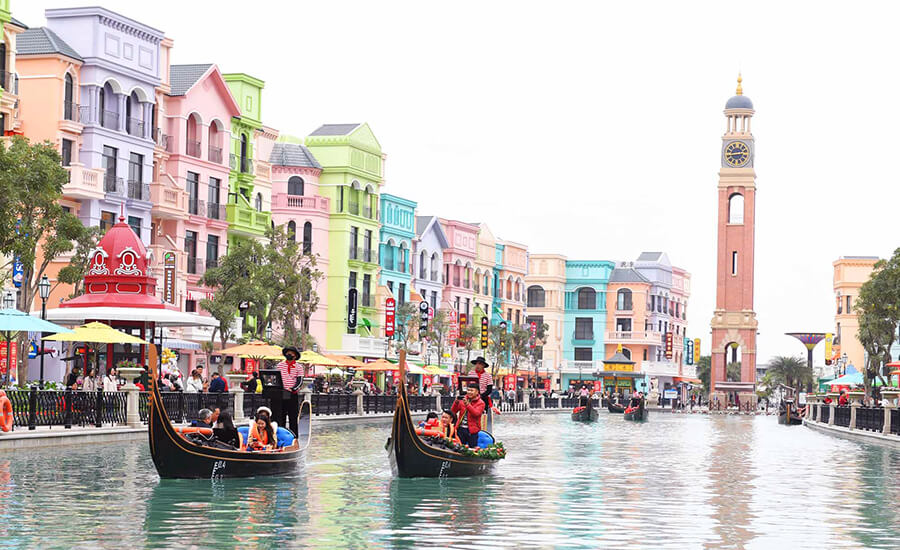
photo source: collected
If you are passionate about spirituality, plan your trip in the first months of the year to enjoy the quiet space and learn about the unique culture and history at famous pagodas and temples such as Keo Pagoda, Dong Bang Temple, Da Hoa – Da Trach Temple, Mau Temple, Phu Ung Temple …
If you want to experience the beautiful scenery of the golden ripe rice fields, visit in the summer to admire the peaceful beauty of the countryside and have the opportunity to participate in outdoor activities.
How to get there?
The central area of Hung Yen is located 55 km from the center of Hanoi capital. Travel time is about 1 hour and 15 minutes. Routes connecting Hanoi with Hung Yen include: North-South expressway (CT01), Hanoi – Hai Phong expressway (CT04), National Highway 5, Hung Yen – Thai Binh expressway (CT16) and some small roads.
If you come from neighboring provinces such as Hai Phong, Quang Ninh, Bac Ninh, Ninh Binh … you can use a motorbike or private car to travel there. However, if traveling from Hanoi, in addition to private vehicles, you can choose other public transport, including:
By bus:
Local buses depart from Nuoc Ngam bus station, Giap Bat, Gia Lam and stop at Hung Yen town bus station (number 208), Van Giang town (number 207), the shore of Crescent Lake, Hung Yen city (number 205). Bus tickets range from 25,000 VND to 30,000 VND per trip. After arriving at the stop, visitors can take a motorbike taxi or taxi to other locations in the province.

inside a limousine to Hung Yen (photo source: collected).
Tourist bus companies run the Hanoi – Hung Yen route, using limousines or 45-seat cars, with ticket prices ranging from 90,000 VND to 150,000 VND one way. Some recommended bus companies: Bao Chau Limousine, Hung Yen Limousine, Huy Tin Limousine, Tan Huong, Xuan Quynh, An Tam VIP. In addition, visitors can also book a shared car, 5-7 seater car.
Airplane
Currently, Hung Yen does not have an airport. If you come from the Central and Southern regions, you can use airplanes for convenience, including flights from Tan Son Nhat Airport, Can Tho Airport, and Da Nang Airport to Noi Bai Airport (Hanoi) or Cat Bi Airport (Hai Phong); then take a taxi or bus to Hung Yen.
Accommodation in Hung Yen
Hung Yen is small in area so there are not many large hotels. Visitors to famous places in the province often return to the city to stay overnight, or continue to neighboring provinces.
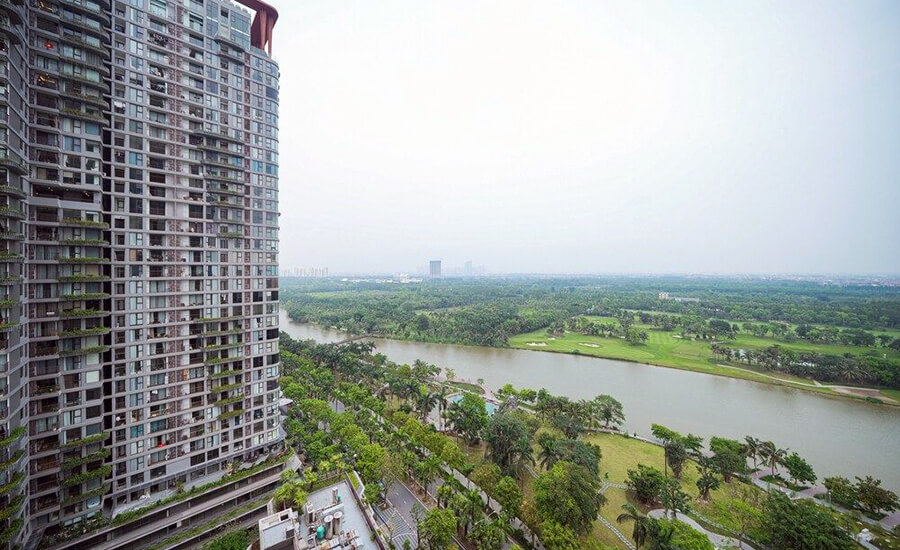
Accommodation areas are mainly concentrated in Hung Yen center. Tourists coming to the city can book 3-4 star hotels, priced at around 500,000 VND to 700,000 VND per night. Some hotels to consider: Quynh Trang Hung Yen, Phuong Anh Hotel, Bao An Hotel. In new residential areas, tourists often book homestays, concentrated in Ecopark urban area and Ocean Park 2. Homestays have a wide range of prices, ranging from a few hundred thousand to several million VND.
Tourist attractions in Hung Yen
Hung Yen is a destination with many historical and cultural relics, traditional festivals, architectural works including communal houses, temples, pagodas, shrines, and mausoleums. Famous relics such as the special national relic site of Hien Street, Da Trach temple associated with the legend of Chu Dong Tu – Tien Dung, one of the “Four Immortals” of Vietnam, Phu Ung temple worshiping General Pham Ngu Lao, Nom pagoda, Chuong pagoda, Mau temple…
In recent years, Hung Yen has attracted many visitors on weekends and holidays, thanks to new urban areas, many modern entertainment experiences, combined with parks that help visitors immerse themselves in nature.
Hien Street
Many Vietnamese are familiar with the saying “One should first visit Thang Long then Hien Street”. Hien Street is located 60 km from Hanoi. To go there, take National Highway 5 to Noi Street then road 39A through rice fields and luxuriant gardens of longan trees.
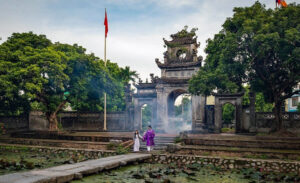 From the 13rd to the 15th century, Hien was a bustling commercial port with boats coming from China, Japan, Thailand, Malaysia, Indonesia, Great Britain and France. But Hien street slowly gave up its position as a commercial port to Haiphong. However, today Hien Street still possesses a whole architectural complex of 60 historical remains, 100 engraved stelae as well as many temples and pagodas.
From the 13rd to the 15th century, Hien was a bustling commercial port with boats coming from China, Japan, Thailand, Malaysia, Indonesia, Great Britain and France. But Hien street slowly gave up its position as a commercial port to Haiphong. However, today Hien Street still possesses a whole architectural complex of 60 historical remains, 100 engraved stelae as well as many temples and pagodas.
The cage-longan (the name come from the technique of covering the longans with cages to protect them from birds) is a specialty of Hien Street which is famous in whole country. The sweet cage-longans with a thick pulp and a thin peel use to be offered to kings only.
Mau Temple
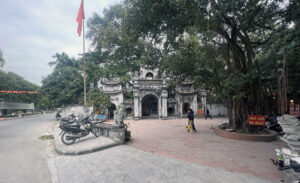 Mau Temple is a famous place in the Hien Street relic complex, considered a sacred place of prayer. The temple is located next to Ban Nguyet Lake, both ancient and majestic and close to the people’s spirituality. Mau Temple worships Duong Quy Phi, wife of King Tong De Binh.
Mau Temple is a famous place in the Hien Street relic complex, considered a sacred place of prayer. The temple is located next to Ban Nguyet Lake, both ancient and majestic and close to the people’s spirituality. Mau Temple worships Duong Quy Phi, wife of King Tong De Binh.
According to historical records, in 1279, the Yuan army invaded, the king and the royal family boarded a boat to flee to the South. They were captured by the Yuan general. The Song King and his concubines refused to submit and jumped into the sea. Duong Quy Phi’s body drifted ashore, was buried by the people and a temple was built to worship her.
Chuong Pagoda
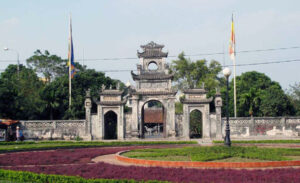 Chuong Pagoda is known as “the most famous scenic spot in Hien Street”. The items in the pagoda bear the architectural and artistic imprints of the Later Le Dynasty interwoven with the Nguyen Dynasty such as: the three-door gate, the front house, the upper hall, the corridor, the temple of King Shennong, the Ancestor House and the Mother House.
Chuong Pagoda is known as “the most famous scenic spot in Hien Street”. The items in the pagoda bear the architectural and artistic imprints of the Later Le Dynasty interwoven with the Nguyen Dynasty such as: the three-door gate, the front house, the upper hall, the corridor, the temple of King Shennong, the Ancestor House and the Mother House.
The pagoda preserves many valuable artifacts such as large inscriptions, parallel sentences, bronze bells, stone gongs. In addition, there is a system of Buddha statues such as the Eighteen Arhats, the Ten Kings of Hell and the Four Guardians. The most prominent is the Eighty-Four Diamond Statues including 18 Arhat statues, 4 Bodhisattva statues running along the two corridors.
Hien Temple & Pagoda
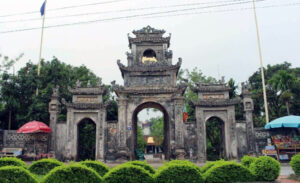 Hien Temple is the place to worship the eunuch named Du, during the Song Dynasty (China) in the 13th century. He wandered to Hien Street, had the merit of founding Hoa Duong village, guiding the villagers in farming, growing mulberry, raising silkworms, fishing, and trading. After his death, the local people built a temple to worship him. The temple was built in the 17th century with a grand architectural scale imbued with the post-Le art style. With the Dinh-shaped architecture, five compartments, the dragon-carved upper part, and the four sacred animals and four seasons carved on the beams, it affirmed his great contribution and the unique beauty of this relic.
Hien Temple is the place to worship the eunuch named Du, during the Song Dynasty (China) in the 13th century. He wandered to Hien Street, had the merit of founding Hoa Duong village, guiding the villagers in farming, growing mulberry, raising silkworms, fishing, and trading. After his death, the local people built a temple to worship him. The temple was built in the 17th century with a grand architectural scale imbued with the post-Le art style. With the Dinh-shaped architecture, five compartments, the dragon-carved upper part, and the four sacred animals and four seasons carved on the beams, it affirmed his great contribution and the unique beauty of this relic.
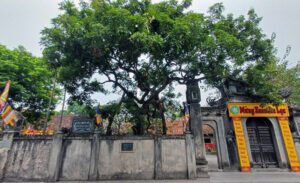 Hien Pagoda is a place to worship Buddha, built and preserved along with the formation and development of Hien Street. Typical of the ancient architectural style of Hien Pagoda includes three front chambers, three Thieu Huong rooms dedicated to Buddha, and three back rooms for Mothers “Mau” (the three Mothers of the sky, the water and the forest). The Thieu Huong rooms are exceptional for their two layer roofs and chimneys for incense smoke. Hien Pagoda is one of the most ancient architectural sites of Hung Yen.
Hien Pagoda is a place to worship Buddha, built and preserved along with the formation and development of Hien Street. Typical of the ancient architectural style of Hien Pagoda includes three front chambers, three Thieu Huong rooms dedicated to Buddha, and three back rooms for Mothers “Mau” (the three Mothers of the sky, the water and the forest). The Thieu Huong rooms are exceptional for their two layer roofs and chimneys for incense smoke. Hien Pagoda is one of the most ancient architectural sites of Hung Yen.
The temple yard has a longan tree, also known as Tien longan, which is over 300 years old. This is a precious longan tree, with sweet and fragrant ripe fruit. In the past, every longan season, longans were picked to offer to Buddha, the village’s tutelary god and the King.
Chu Dong Tu Temple
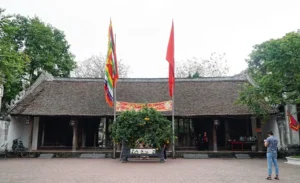 Chu Dong Tu Temple, also called Da Hoa Temple, is dedicated to Saint Chu Dong Tu who is worshipped as one of the Four Immortals of Vietnamese Deities, and his wife, the princess Tien Dung, who was the daughter of King Hung 18th.
Chu Dong Tu Temple, also called Da Hoa Temple, is dedicated to Saint Chu Dong Tu who is worshipped as one of the Four Immortals of Vietnamese Deities, and his wife, the princess Tien Dung, who was the daughter of King Hung 18th.
The temple is located in Me So commune, on a large rectangle of land facing the west and Tu Nhien alluvial plain. The Ngo Mon (the Southern gate) has three doors. The main door is a three partitioned structure which features two dragons flanking a moon on the rooftop. These doors are only opened on festival days. On either side of the main door, are two doors used for welcoming visitors.
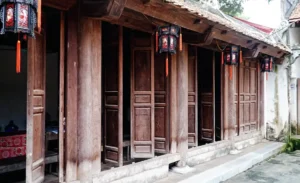 Passing by the central courtyard, visitors will reach Dai Te, Thieu Huong house, De Nhi Palace, De Tam Palace and finally the Sanctuary. The Thieu Huong house was built in a solemn spacious architectural style. The ending of the upper rooftop and the edge of the roof are carved in details and colourfully modelled with many decorative shapes such as dragons and lions. There are also beautiful bronze statues of Saint Chu Dong Tu and his wife.
Passing by the central courtyard, visitors will reach Dai Te, Thieu Huong house, De Nhi Palace, De Tam Palace and finally the Sanctuary. The Thieu Huong house was built in a solemn spacious architectural style. The ending of the upper rooftop and the edge of the roof are carved in details and colourfully modelled with many decorative shapes such as dragons and lions. There are also beautiful bronze statues of Saint Chu Dong Tu and his wife.
Today, Chu Dong Tu temple still preserves many precious relics, among which is an invaluable pair of “Bach Tho” vases, refers to one hundred “Tho” Chinese characters engraved on the bodies of the vases in various different styles.
The temple is not only a place of worship but also a place to hold festivals. The Chu Dong Tu Festival takes place in the third lunar month every year, including many cultural activities, sports and folk games. In addition to its spiritual value, the temple is also a place to preserve and promote cultural and historical values. Visitors come here not only to pray for luck and health but also to learn about the legends and culture of the Vietnamese people.
Phuong Hoang Temple
The Phuong Hoang Temple is located in Phuong Hoang village, Tien Tien commune. It is dedicated to Ms. Cuc Hoa, a beautiful women born in wealthy family, who nonetheless always proved to love poor people and respect the truth.
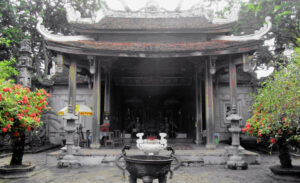 The temple was conceived in the form of the Chinese character “three”. At each end, there are two pillars with lotus-sharped tops. The temple is characterized by typical overlapping architecture which was very popular during the Nguyen Dynasty.
The temple was conceived in the form of the Chinese character “three”. At each end, there are two pillars with lotus-sharped tops. The temple is characterized by typical overlapping architecture which was very popular during the Nguyen Dynasty.
The horizontal frames of the roof were engraved with strings of flowers.
In the centre of the worship house, there is an altar. On both sides, there is a pair of wood panels engraved with praise for Cuc Hoa. Hanging on the left of the altar is a big well, which was cast in the time of Bao Dai. In the main hall of the middle temple, there is a big cabinet with a statue of Cuc Hoa inside. Beside the cabinet are statues of the village Lord and village founder.
Presently, it is still possible to admire the ancient temple, the statue of Ms. Cuc Hoa, Amitayus Buddha, give thrones, a dragon palanquin and a bell.
Keo Pagoda
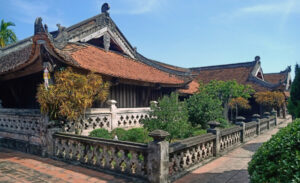 The pagoda is located in Dung Nhue Hamlet, Vu Tien commune. It was built in 1067 and has been upgraded many times. It has a rectangular shape composed of several structures with craggy tile-roofs, which well blend with a natural setting. It consists of Ho pagoda. Phat Pagoda and the sanctuary dedicated to the zen master Khong Lo. The architectural arrangement of pagoda follows the style “front is dedicated to the Buddha and the back to deities”. At its end are the bell tower, patriarch worshipping house and two corridors stretching from Ho pagoda to the patriarch-worshipping house.
The pagoda is located in Dung Nhue Hamlet, Vu Tien commune. It was built in 1067 and has been upgraded many times. It has a rectangular shape composed of several structures with craggy tile-roofs, which well blend with a natural setting. It consists of Ho pagoda. Phat Pagoda and the sanctuary dedicated to the zen master Khong Lo. The architectural arrangement of pagoda follows the style “front is dedicated to the Buddha and the back to deities”. At its end are the bell tower, patriarch worshipping house and two corridors stretching from Ho pagoda to the patriarch-worshipping house.
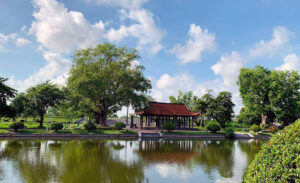 The pagoda has got 17 structures composed of 128 compartments. The three-storey bell tower is 11.06m in height and has got 12 charming curved corners. This is an original architectural work, evoking a freshly boomed lotus rising by the straight high areca trees. The pagoda displays the artistic features of wood installation. On the first stone instrument is hung over. On the second storey, there is a bell cast in 1686, and on the third and the highest storeys are bells cast in 1796.
The pagoda has got 17 structures composed of 128 compartments. The three-storey bell tower is 11.06m in height and has got 12 charming curved corners. This is an original architectural work, evoking a freshly boomed lotus rising by the straight high areca trees. The pagoda displays the artistic features of wood installation. On the first stone instrument is hung over. On the second storey, there is a bell cast in 1686, and on the third and the highest storeys are bells cast in 1796.
At present, the pagodas preserves many valuable votive objects. At its back sanctuary, there is a statue of a zen master made of aloe wood, a bell cast in the Le Dynasty, and porcelain. The Keo pagoda festival, held on the fifteen of the ninth lunar), is a big cultural event, which attracts many pilgrims and tourists.
Dong Xam Temple
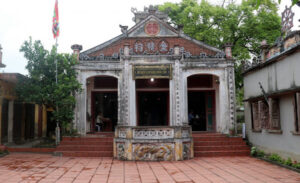 The temple is situated in Tra Giang Commune. The temple covers an area of 1,000 sqm dedicated to Nguyen Kim Lau – the founder of silver engraving work. It consists of a number of magnificent and beautiful architecture work such as Vong Lau, Thue Toa, Hoanh Ma, worshipping yard, Front House…
The temple is situated in Tra Giang Commune. The temple covers an area of 1,000 sqm dedicated to Nguyen Kim Lau – the founder of silver engraving work. It consists of a number of magnificent and beautiful architecture work such as Vong Lau, Thue Toa, Hoanh Ma, worshipping yard, Front House…
Vong Lau is a house used for viewing the landscape. Thuy Toa is a hexagonal house comprising 6 curve doors, which turn to different directions. From this house, tourists can view the whole scene of the worshipping yard and the boat races on the river when Festival are held.
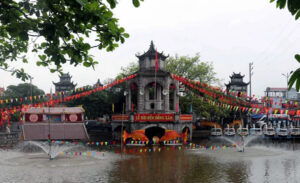 The Front House of the temple is a great temple with the height of 13 meters and consists of 5 large partitions. It is the large size and magnificent architecture that make it different from others. The Back House of the temple is structured into two linked parts: a 5 partition temple and a Kham partition (to place the statutes in). The front of the back house is harmoniously decorated with big Chinese words, the parallel sentences, letter scrolls and carved wooden gates.
The Front House of the temple is a great temple with the height of 13 meters and consists of 5 large partitions. It is the large size and magnificent architecture that make it different from others. The Back House of the temple is structured into two linked parts: a 5 partition temple and a Kham partition (to place the statutes in). The front of the back house is harmoniously decorated with big Chinese words, the parallel sentences, letter scrolls and carved wooden gates.
Kham partition in the back house is considered as masterpiece of the traditional occupation village. It is covered with the sheets of copper carved with such subjects as four animals (dragon, unicorn, tortoise, phoenix), four plants (pine, apricot, chrysanthemum, bamboo), etc. The statues of Trieu Vu King and Tri Thi Queen placed in Kham partition are casted in copper and gilded. In conclusion, both architecture and things remained in Dong Xam temple creat a great collection of carved wooden stone, metal articles in Vietnam from Nguyen Dynasty.
Dong Xam Silver Village
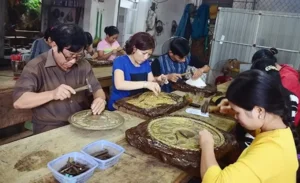 Located in the north of Tra Giang commune, Dong Xam is a village whose population is skilled in metal carving. According to the local people, 300 years ago, there was an artist name Nguyen Kim Lau, who traveled downstream on the Tra Ly River by boat to in honour of Buddhist dignitary Duong Khong Lo, a man who is credited with curing Le King from a serious illness.
Located in the north of Tra Giang commune, Dong Xam is a village whose population is skilled in metal carving. According to the local people, 300 years ago, there was an artist name Nguyen Kim Lau, who traveled downstream on the Tra Ly River by boat to in honour of Buddhist dignitary Duong Khong Lo, a man who is credited with curing Le King from a serious illness.
The participants take part in many religious rites and ceremonies as well as in many games and artistic performances that reflect the distinctive traits of this agricultural community of the Red River Delta.
Dong Chau Beach
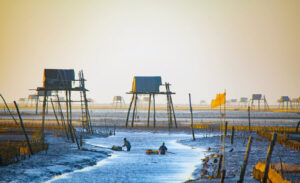 Dong Chau beach is located in Dong Chau commune, 30km far from Thai Binh ward along National Road 39B and 145km from Hanoi.
Dong Chau beach is located in Dong Chau commune, 30km far from Thai Binh ward along National Road 39B and 145km from Hanoi.
The beach lies 5km in length and has reserved much of a wild beauty. Several hotels and guesthouses have been built to accommodate visitors in coconut groves and huge gardens. From Dong Chau beach, tourists can take a boat to visit Thu and Vanh Islets which also offer good beaches. Lying 7km from coastlines, Thu and Vanh islets look like two green waves emerging from a 5 ha islet, which lures people for its lush forest, green casuarina-trees, small but picturesque and quiet beaches.
The best of Dong Chau beach is pure air, soft winds and good climate which are good conditions for relaxation and convalescing. Seafood is good to taste and reasonably price.
Bach Thuan Garden Village
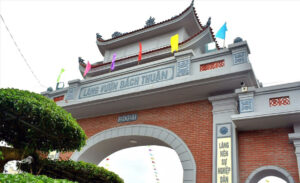 Bach Thuan is in Tan Thuan commune, approximately 20km from Thai Binh ward. It is a rich and populous garden village, the edge of which is an alluvial field which serves for the cultivation of mulberry, banana and sugarcane. Inside the village are fruit tree and ornamental plants and fruits during all four seasons: apples, guavas, plums, lemons, longans, sapodillas, oranges, tangerines, bananas and jack fruits.
Bach Thuan is in Tan Thuan commune, approximately 20km from Thai Binh ward. It is a rich and populous garden village, the edge of which is an alluvial field which serves for the cultivation of mulberry, banana and sugarcane. Inside the village are fruit tree and ornamental plants and fruits during all four seasons: apples, guavas, plums, lemons, longans, sapodillas, oranges, tangerines, bananas and jack fruits.
Flowers and fruits are specialties of this village where gardening has become an art. At times of high tide, Bach Tuan’s roads flood and become small rivers. From one house to another visitors and locals must take boats.
Cuisine – specialties of Hung Yen
Tieu Quan chicken cakes
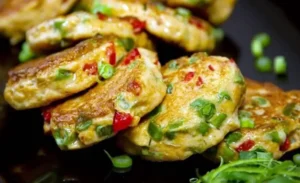 This is a typical dish of Tieu Quan village, Khoai Chau commune, often enjoyed during holidays. To make the finished product, the chicken is carefully selected, only the best part is taken, all tendons and bones are removed and then cut into small pieces, then traditional pork sausage is pounded. When the meat is almost soft, add egg yolk, fish sauce, seasoning powder, pepper, ginger, a little lard and tangerine peel and continue pounding. The chicken meat pounded by hand will be smooth and delicious. After pounding, spread the meat on a grill with areca leaves.
This is a typical dish of Tieu Quan village, Khoai Chau commune, often enjoyed during holidays. To make the finished product, the chicken is carefully selected, only the best part is taken, all tendons and bones are removed and then cut into small pieces, then traditional pork sausage is pounded. When the meat is almost soft, add egg yolk, fish sauce, seasoning powder, pepper, ginger, a little lard and tangerine peel and continue pounding. The chicken meat pounded by hand will be smooth and delicious. After pounding, spread the meat on a grill with areca leaves.
Tieu Quan chicken cakes must be grilled with charcoal (firewood) and if a few dried pine nuts are added, it will increase the aroma. The sausage is often served with sticky rice, white rice, and is best eaten when the weather is cold. The average price is from 350,000 to 450,000 VND per kg.
Phuong Tuong Braised Frog
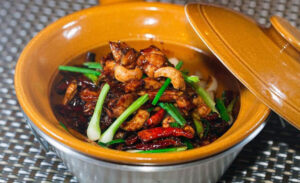 Phuong Tuong Braised Frog originates from Phuong Tuong village, Hoang Hoa Tham commune. The dish has appeared for a long time, in the difficult times when food was collected from fields, ponds, “eat whatever is available”.
Phuong Tuong Braised Frog originates from Phuong Tuong village, Hoang Hoa Tham commune. The dish has appeared for a long time, in the difficult times when food was collected from fields, ponds, “eat whatever is available”.
To fully express the delicious taste of the dish, the cook must have the ability to “hold the flavor”, must master the recipe with 23 spices. The processing process also needs to be meticulous right from the stage of choosing ingredients, methods, marinating time, seasoning, keeping the fire adjusted according to each time. The two most typical dishes are braised frog with banana and bean and braised frog for the king. Frog is most delicious around September-October every year.
Dong Tao Chicken
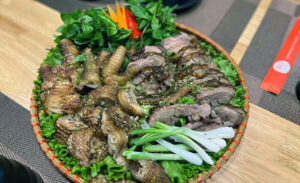 Dong Tao chicken, in Hoan Long commune is a famous specialty that has existed for a long time. This is a precious breed of chicken, once offered to the king. Today, the chicken has become an expensive specialty, also known as “rich people’s” chicken.
Dong Tao chicken, in Hoan Long commune is a famous specialty that has existed for a long time. This is a precious breed of chicken, once offered to the king. Today, the chicken has become an expensive specialty, also known as “rich people’s” chicken.
The most prominent feature of Dong Tao chicken is its large legs, likened to those of dragons, and its red skin like that of fighting cocks. There are chickens that weigh up to 6 kg and at that time its pair of legs is as big as a human wrist. Female chickens usually have white feathers, while male chickens have more colorful feathers. A pair of Dong Tao chickens costs about 400,000 VND to 600,000 VND per kg.
Longan
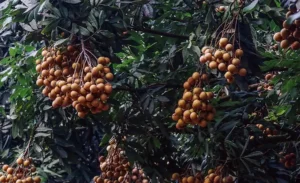 Longan has long been a brand and a source of pride for Hung Yen province. Hung Yen longan has thick flesh, has veins, and especially has a unique aroma that no other region has.
Longan has long been a brand and a source of pride for Hung Yen province. Hung Yen longan has thick flesh, has veins, and especially has a unique aroma that no other region has.
With favorable climate conditions and geographical location, Hung Yen longan has a higher quality than many other types of longan grown in other localities in Vietnam. Longan usually blooms in July, so if you come to Hung Yen at this time, you will experience the feeling of being able to touch large, round, heavy bunches of longan on the road. The average price for each kg of Hung Yen longan is from 20,000 VND to 40,000 VND per kg (depending on the time).
Ban Soy Sauce
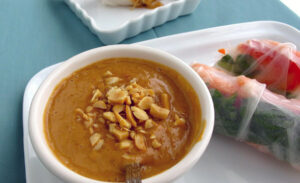 Produced in My Hao ward, Ban soy sauce is a traditional dish of the Vietnamese people. The soy sauce is dark yellow or cockroach-like in color, when poured out, it will have a thick and fragrant texture. The soy sauce making profession in My Hao has a long history, formed over many centuries and has become a part of the local culinary culture.
Produced in My Hao ward, Ban soy sauce is a traditional dish of the Vietnamese people. The soy sauce is dark yellow or cockroach-like in color, when poured out, it will have a thick and fragrant texture. The soy sauce making profession in My Hao has a long history, formed over many centuries and has become a part of the local culinary culture.
The sauce is made from beans soybeans, rice, salt and natural spices. Wash the rice, steam it into sticky rice, and let it mold for 3-5 days. Clean the soybeans, roast them, and soak them in water for about 7 days. Mix the sticky rice mold, soaked soybeans, and salt in a clay pot and let it ferment for 1-3 months, stirring every day. Hot weather (April to August) is ideal for making soy sauce. Soy sauce has a rich, fatty, and rich taste, and is a dipping sauce when eaten with te cake, duc cake, sweet potato leaves, water spinach, and boiled meat.
Source: collected by An
Follow us for the best deal with Vietnam package tours and visa services!
